Behavior of Solutions to First-Order Linear Systems
Questions
- Experiment with different systems and initial values. Note that the solution curves are always horizontal when they cross the green line and vertical when they cross the red line. Why do the curves behave like that?
- Now find examples of systems of each of the following 6 types of
systems. Note
that you don't have to find examples that look exactly like the pictures,
just examples that have the same sort of behavior. Of course, using
the red and green lines you can actually match the pictures without
much effort, and that is probably the easiest way to find examples of some
of the behaviors.
(A) Solutions diverge straight out to infinity 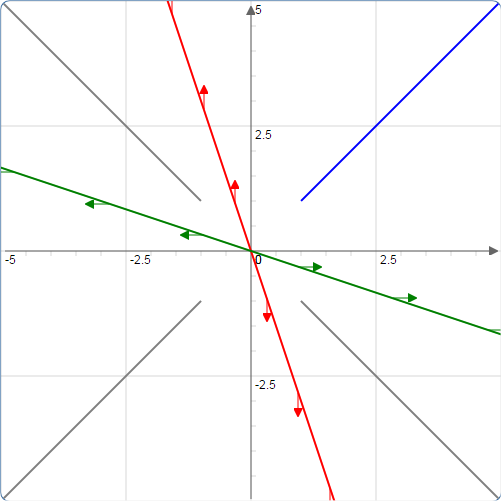
(B) Solutions converge directly to the origin (possibly with a "twist" as illustrated here). 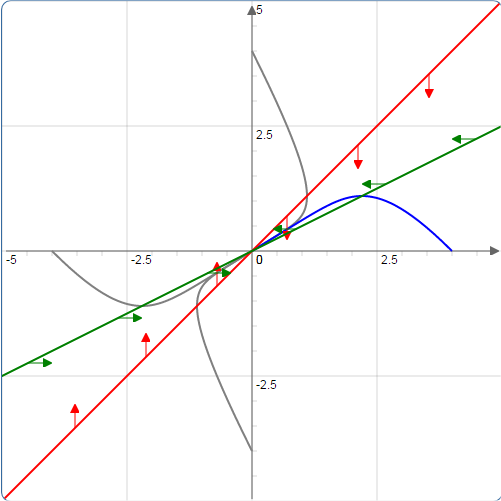
(C) A "saddle point" at (0,0) where solutions converge toward the origin in one direction and then turn and diverge away in a different direction (there will be one solution converging to the origin in between the solutions turning in each direction). 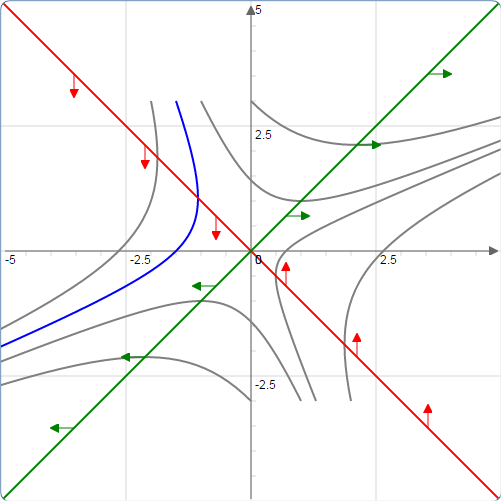
(D) Solutions spiral out to infinity. 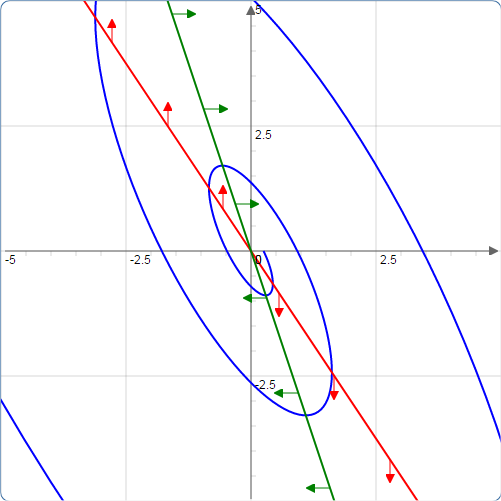
(E) Solutions spiral in to the origin. 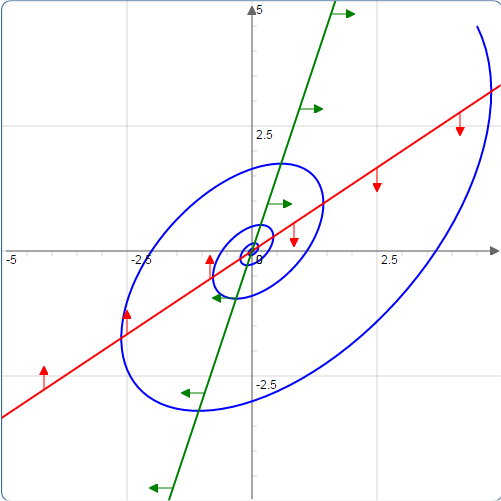
(F) Solutions spin around the origin along ellipses, neither converging toward the origin nor diverging away from it. 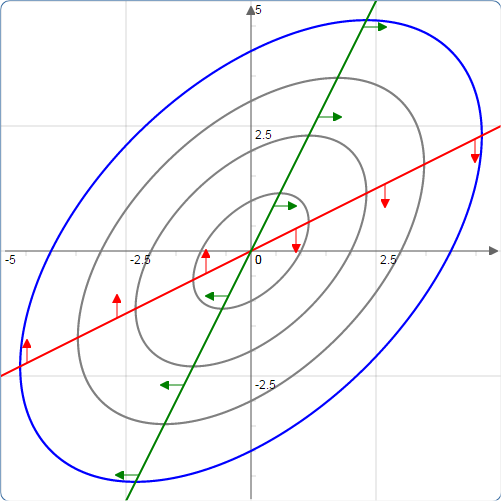
- In the system
x' = ax + by, x(0)=x0, two very useful quantities to know are the
y' = cx + dy, y(0)=y0,
trace = a + d and thedeterminant = ad - bc . Compute the trace and determinant for each of your examples. Can you find a relationship between the type of system (saddle, spiral in, etc.) and the values of the trace and determinant? Many of these are straightforward, but distinguishing between a couple of cases will be a little subtle. You will want to check some other examples to be sure you have the relationship correct. - Finally, write the Laplace transform of the solutions to the system
x' = ax + by, x(0)=x0, in terms of the coefficients, a, b, c, d, x0, and y0. Identify where the trace and determinant appear in the formulas for the solution. Explain why knowledge of the trace and determinant should enable you to predict the form of the solution. You don't have to justify each of your 6 relationships, just relate what you discover to a previous lab to explain in general why knowledge of the trace and determinant can give you so much information about the shape of the solution.
y' = cx + dy, y(0)=y0,
If you have any problems with this page, please contact bennett@ksu.edu. ©1994-2025 Andrew G. Bennett